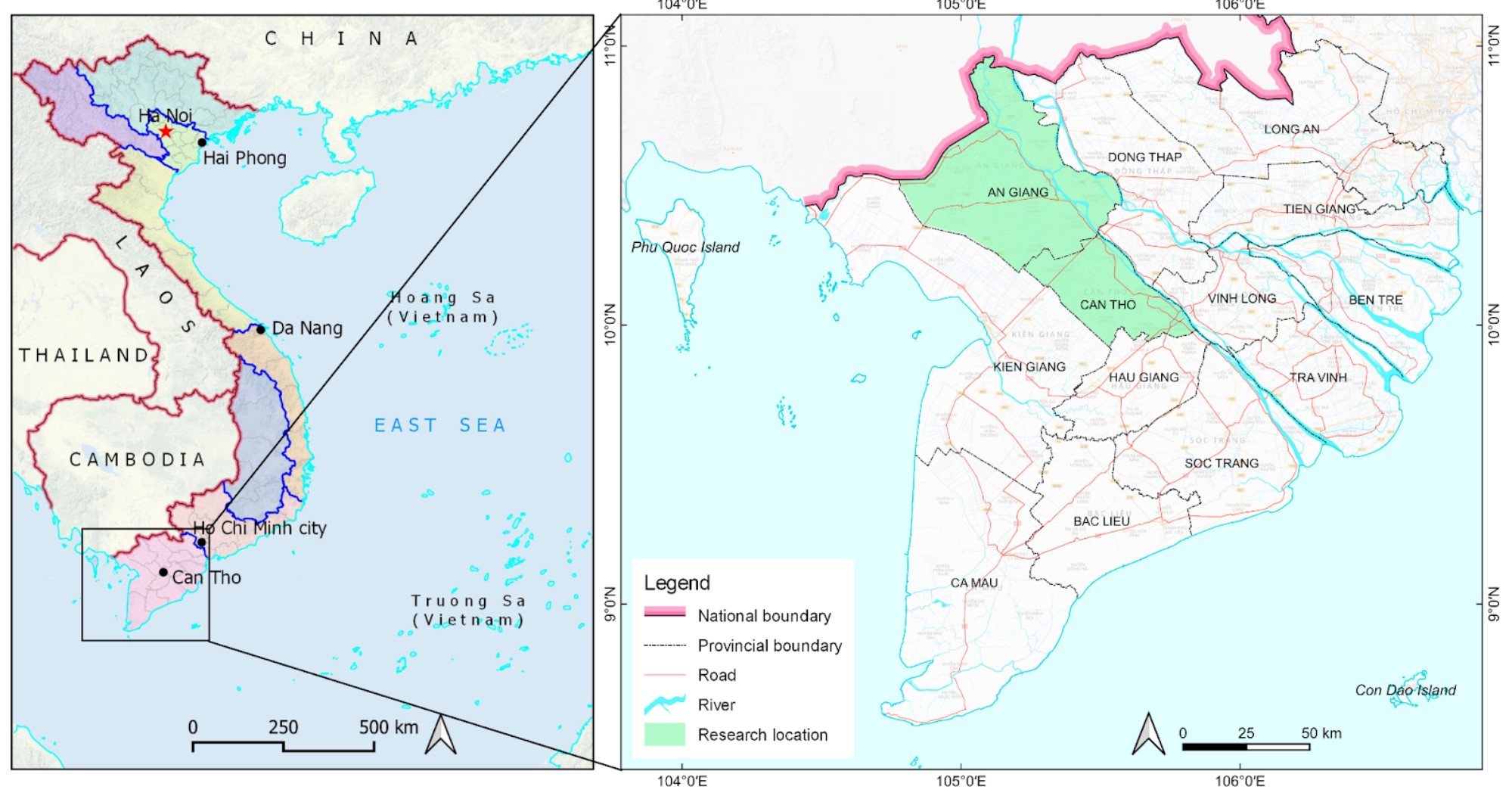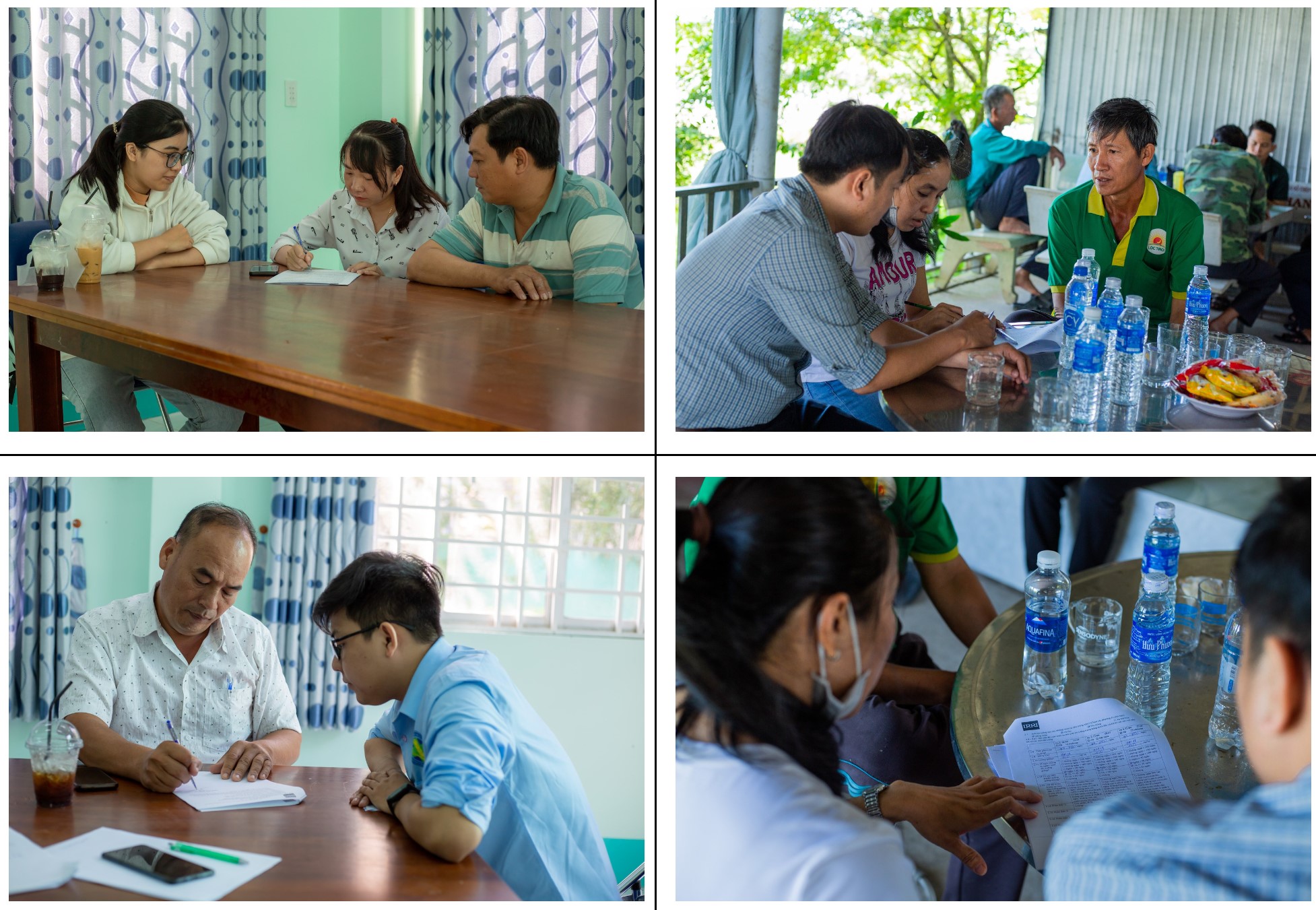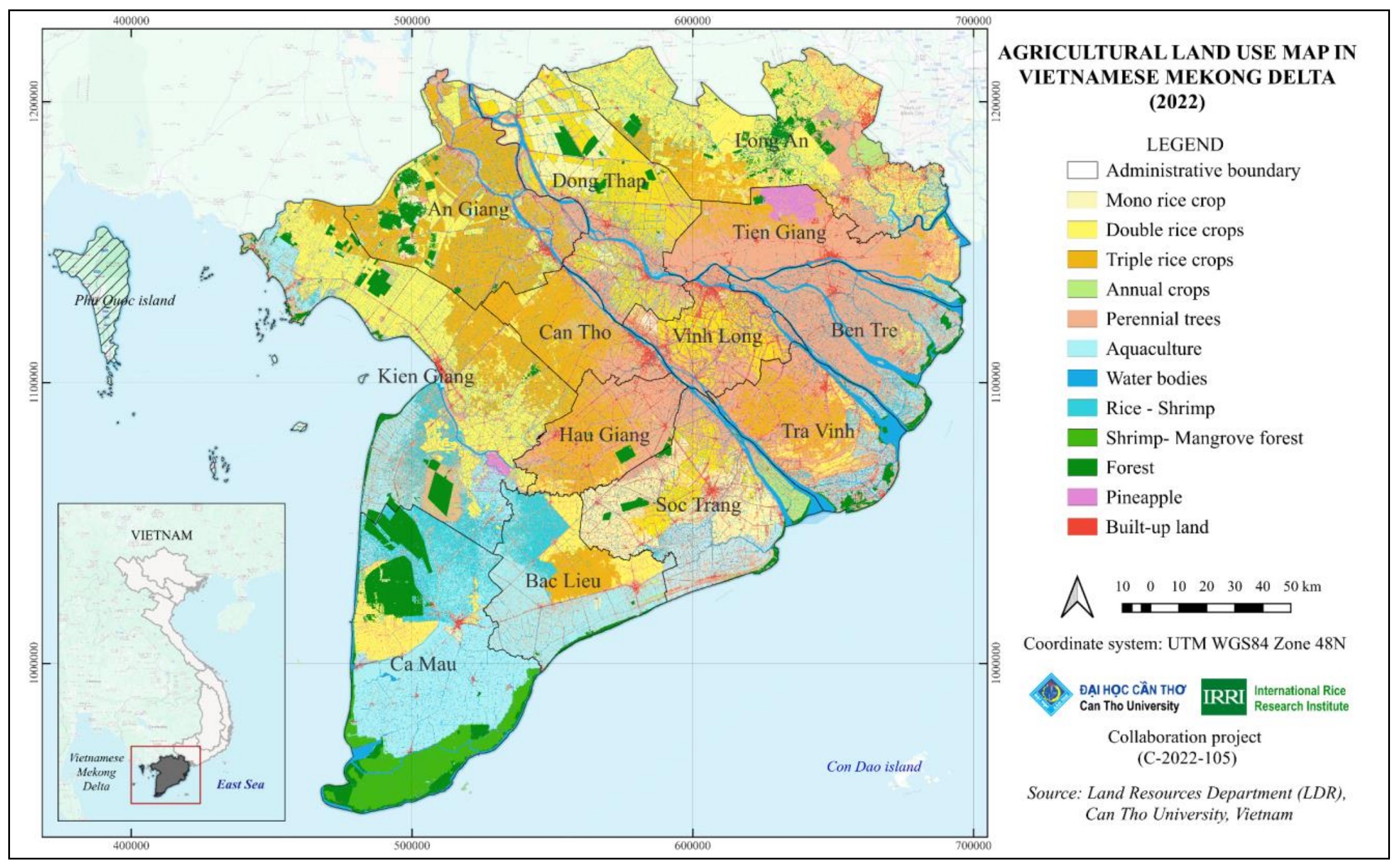CGIAR-C-2022-105
Securing the food system of Asian mega-deltas for Climate and Livelihood resilience; Funded by CGIAR [2023]
Project ID (C-2022-105): Securing the food system of Asian mega-deltas for Climate and Livelihood resilience
Role: Participants:
Period: 2022-2023
Funder: Internatonal Rice Research Institute (IRRI-Vietnam)

Using Digital Tools in Sustainable Rice Platform (SRP) for Data Collection and Scoring
Objectives
-
Understand the process of data collection and scoring of farmers’ rice farming practices according to SRP standards and performance indicators;
-
Understand the benefits and challenges of the current system/tools for SRP data collection and scoring;
-
Recommend improvements in the development and adoption of digital tools for SRP collection and scoring.
Output


Study on costs and benefits of the main agricultural production systems in MRD (40,000 USD)
Objetives
-
To develop a database of costs and revenues for various local agricultural production systems
-
To understand the baseline adoption of different production systems in the surveyed area
-
To inform decisions in production diversification to ensure food security and economic gains while improving climate resilience of the delta areas.
-
Develop a database of climate change impacts on different cropping systems, risk assessments for the agriculture sector.
Output

Summary
The Mekong Delta is a pivotal agricultural region in Vietnam, known for its extensive and varied production. Covering over 80% of its area with rice farming, the delta's agricultural landscape is dominated by double and triple rice crops, especially in the Dong Thap Muoi and Long Xuyen Quadrangle regions, including Kien Giang, An Giang, Can Tho, Dong Thap, and Long An provinces. In contrast, coastal areas feature rice-shrimp farming and other brackish aquaculture, with significant activities in Kien Giang, Bac Lieu, Soc Trang, and Tra Vinh. The region is also celebrated for its fruit production, with major orchards in Tien Giang, Ben Tre, Vinh Long, Can Tho, Hau Giang, and Soc Trang provinces, producing a variety of geographical indication fruits. Brackish aquaculture, particularly the mangrove-shrimp model, is prevalent in the Ca Mau peninsula. The distribution of agricultural land use is heavily influenced by water resources and irrigation systems. However, the delta faces challenges from climate change, including drought, saltwater intrusion, and soil degradation, threatening food security and livelihoods. In response, local authorities are shifting from traditional rice cultivation to diverse fruit and vegetable farming, and expanding aquaculture in coastal areas to adapt to changing conditions. This report tackles a comprehensive land use analysis of the Mekong Delta region covering all its thirteen provinces.
Technical Report on Land use package
Diem, P. K., Nguyen, C. T., Tien, P. D., Diem, N. K., Nguyen, N. T., Hong, T. G., & Vu, P. H., 2024. Report on Land Use Analysis for 13 Provinces in Vietnamese Mekong Delta in 2022. Consultative Group on International Agricultural Research (CGIAR) Link